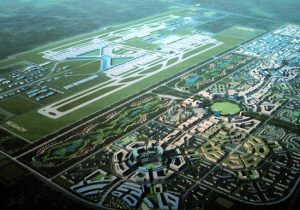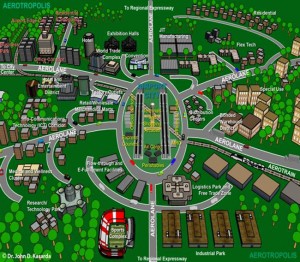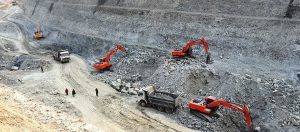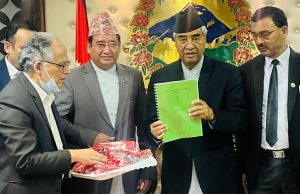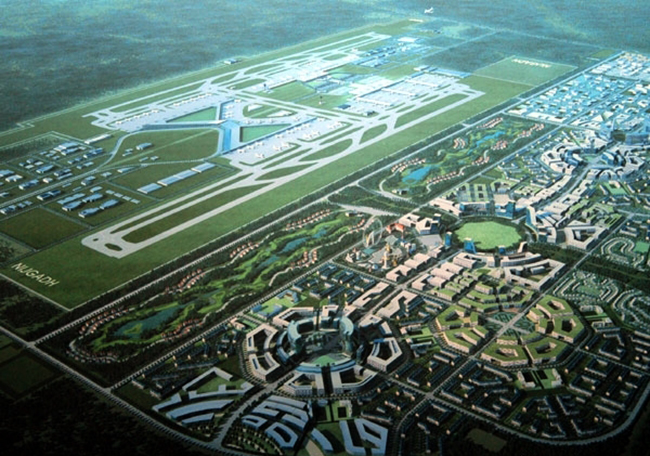
Amidst various protest programmes launched by environmentalists and stakeholders against the government plan to construct an international airport in Nijgadh of Bara district in southern Nepal, the government announced in its annual policy and programme for the next fiscal year that it would begin the construction works as soon as possible.
The recent announcement has once again triggered a fresh debate on the proposed project’s practicality, in particular from the environmental perspective, as it will cause a huge loss to Nepal’s forest cover.
The country’s greenery and biased development
Nepal has a startlingly high percentage of forest cover; 44.74% of the land mass is covered in forest, according to a recent national report. This also covers the number of protected areas that Nepal contains within its periphery. Of total forest area, 38% is in the mid-hills, 32% in the high mountains, 23% in the Siwaliks, and only 7% in Tarai.
The rate of deforestation has been peaking in the southern plains of Nepal for quite some time now. The study ‘Socioeconomic Factors and Management Regimes as Drivers of Tree Cover Change in Nepal’ states that in the period of 2001-2016, 46,000 hectares of forest cover was stripped; Chure and Tarai regions saw the highest forest loss during the 16 years. The study also highlights that the loss of tree cover in the Siwaliks was 28%, Hill region 26%, Tarai 22%, middle mountain 21%, and high mountain 2%. Districts like Kailaii (6%), Dang (5%), Rautahat (3 %) and Nawalparasi (3%) saw a significant loss of tree cover.
The Chure range, that has always been a backbone of Tarai, has been destroyed by political activities and human indifference. This indifference has been fuelled by the notion of development. When the phrase ‘third world country’ was coined, it set a new paradigm for us. It meant that in order to reach the level of first world countries, we desperately need to build infrastructures. In Nepal, the term ‘development’ thereby became synonymous with roads and high rise buildings. Forests instantly fell prey to such school of thought. In Nepal, where community forestry is still considered to be one of the successful interventions undertaken by the government with the involvement of the communities, other types of forests like government-owned, private and religious ones can easily be cleared if it is a matter of ‘national interest’ or ‘national pride’.
Context of the Nijgadh international airport
Till date, about 17,000 hectares of forests have already been handed over to the government for infrastructure projects. If the Nijgadh International Airport is to be built, it will further clear around 8,000 hectares of hardwood forest.
Enriched with centuries-old sal trees, the forest is home to a high number of species of mammals, reptiles, birds, and amphibians. This project, however, does not only affect the animals and biodiversity but clearing the forest will change the entire ecosystem and affect the daily life of the locals.
But, ‘pro-infrastructure groups’ have failed to notice it. What they rather highlight is that Nepal’s contribution to the global greenhouse gas emission is less than 1%. However, Nepal is one of the top 5 countries in the world which will be adversely affected by climate change. It means that we will need to safeguard our natural resources and habitat fiercely instead of falling prey to business plans and propaganda.
Whether it is melting glaciers or dynamically changing weather patterns, we have already started seeing the effects of human interventions in nature the name of development. The recent tornado in Bara has shown how unprepared our government is to handle such dire situations.
What’s the intent?
According to the 2018 Corruption Perceptions Index reported by Transparency International, Nepal is the 124th least corrupt countries out of 175. The money that was pulled from donors after the 2015 earthquake has still not been adequately given to the families affected. Yet we believe that the billions dollar project will see the light of the day without being manipulated by our politicians, bureaucrats, business houses and mafia. The failure of the government to present the report of seven alternative sites for the airport before the finalisation of Nijgadh as the most suitable site adds to the lingering doubts about the government’s intent.
Furthermore, they are expecting to generate money by selling the timber of 2.4 million trees of the whole 8,000 hectares while the total area of the airport proposed is mere 1,900 hectares.
Meanwhile, the silence of conservation organisations like WWF Nepal, IUCN and Nepal Trust for Nature Conservation is adding fuel to the destruction.
What will it do anyway?
Apart from conservation politics, another alarming aspect of this project is the lack of any mitigation framework. The environmental impact assessment of this project clearly states that there will be an immense impact on the soil quality, state of air, water, and local climate. The possibility of soil pollution, water acidity, air degradation, human-wildlife conflict, and climate disasters is evident. However, the mitigation aspect of such adverse effects is neglected.
Desertification and land degradation is a problem that has been affecting Tarai for a long time now. The problem will get serious further each of Bara that includes Rautahat, Sarlahi and Mahottari districts if the airport is constructed. The unexpected rain pattern will get worse affecting the agricultural yields. The proposed airport falls in the lower Bhawar area, which is the major water regeneration site. The total agricultural land mass there is 3,900 hectares and about 400 fisheries are under operation.
In addition to this, around 300,000 people are dependent on timber, herbs and other non-timber forest products in this forest range. Clearing 8,000 hectares of forest will increase their dependency on the Chure range, which will further aggravate the existing degradation of the region. The flow of sand and debris furthermore will destroy the agricultural stretch of Tarai. Desertification will create more imports and a staggering rise in the price of our food products. This will be a blow to the local communities who will be forced to get their food from the market at rising price rate while their own land turns into useless deserts.
There has been a lot of debate on replantation of the trees once the forest area has been cleared. However, let’s talk about the statistics once again. In the EIA report, it has been mentioned that for a single tree cut down, 25 trees will be replanted. In order to reach that goal of 1:25 ratio, the government will have to plant 61.2 million trees for the 2.48 million trees to be cut. For this, a single stretch of 38,294 hectare of land is necessary. Sadly, it is not available throughout the Tarai region. It means reforestation is an impossible dream.
What will we need?
The Tarai region does not need such a big infrastructure right now. With railways and highways and open border, the region always has had an upper hand in possibilities. What keeps the region backward is just mismanagement of resources, selective ignorance from the mainstream politics to address the issues of the communities living in the region and the massive lag in the delivery of opportunities to the ground. These are the things that need to be addressed immediately.
Development is absolutely necessary for the region, but not Singhadurbar-based, centrally planned, trickled down model. What Tarai needs and should demand is a sustainable and holistic development intervention where the local communities are incorporated along with their interests, well being and a long term vision. Or else, the international airport will only need to bring relief materials, due to unfathomable disasters, instead of much awaited and highly promised development.
Note: The data presented here are taken from the government’s EIA report and another comprehensive report prepared by experts.
Shrestha is an animal rights activist.






